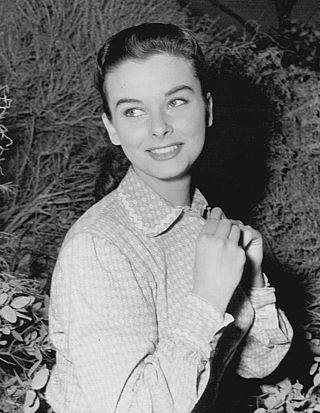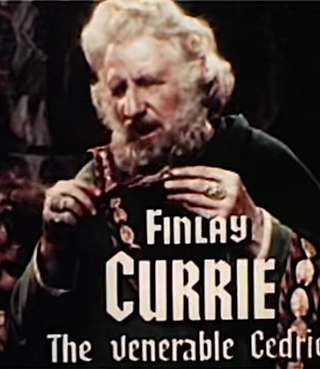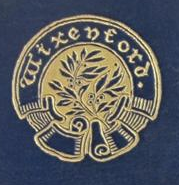
Earl Castle Stewart, in the County Tyrone, is a title in the Peerage of Ireland. It was created in 1800 for Andrew Thomas Stewart, 9th Baron Castle Stuart.

Viscount Hawarden is a title in the Peerage of Ireland.

Baron Cranworth is a title that has been created twice, both times in the Peerage of the United Kingdom. The first creation came in 1850 when the lawyer and Liberal politician Sir Robert Rolfe was made Baron Cranworth, of Cranworth in the County of Norfolk. He later served as Lord High Chancellor of Great Britain. This creation became extinct on his death in 1868.

Mark of the Vampire is a 1935 American horror film, starring Lionel Barrymore, Elizabeth Allan, Bela Lugosi, Lionel Atwill, and Jean Hersholt, and directed by Tod Browning. A series of deaths and attacks by vampires brings the eminent expert Professor Zelen to the aid of Irena Borotyn, who is about to be married. Her father, Sir Karell, died from complete loss of blood, with bite wounds on his neck, and it appears he may be one of the undead now plaguing the area.

Timeline is a 2003 historical science fiction adventure film directed by Richard Donner and starring Paul Walker, Frances O'Connor, Gerard Butler, Billy Connolly, David Thewlis, and Anna Friel. Based on Michael Crichton's 1999 novel of the same name, the screenplay concerns a team of present-day archaeology and history students who are sent back in time to medieval France to rescue their professor from the middle of a battle.

William Castle was an American film director, producer, screenwriter, and actor.

Twelve Dreams of Dr. Sardonicus is the fourth album by the American rock band Spirit. It was produced by David Briggs, who is best known for his work with Neil Young. The original LP was released in November 1970 by Epic. The band's lowest charting album to that point, it peaked at #63 on the Billboard 200 in February 1971, spending only fourteen weeks on the chart. However, it sold well as a catalog item and became the band's only album to ultimately attain a RIAA gold certification in the U.S., achieving that status in 1976. On the Canadian RPM Magazine Top 100 charts, the album reached #49 and was in the top 100 for 10 weeks.

Audrey Dalton is an Irish-born former film and television actress who mostly worked in the United States during the Golden Age of Hollywood.

William Finlay Currie was a Scottish actor of stage, screen, and television. He received great acclaim for his roles as Abel Magwitch in the British film Great Expectations (1946) and as Balthazar in the American film Ben-Hur (1959).

Homicidal is a 1961 American horror-thriller film produced and directed by William Castle, and starring Glenn Corbett, Patricia Breslin, Eugenie Leontovich, Alan Bunce and Jean Arless. The film follows a murderous woman in a small California town whose presence unearths secrets concerning a prominent local family.

Charles Henry Pywell Daniell was an English actor who had a long career in the United States on stage and in cinema. He came to prominence for his portrayal of villainous roles in films such as Camille (1936), The Great Dictator (1940), Holiday (1938) and The Sea Hawk (1940). Daniell was given few opportunities to play sympathetic or 'good guy' roles; an exception was his portrayal of Franz Liszt in the biographical film of Robert and Clara Schumann, Song of Love (1947). His name is sometimes spelled "Daniel".

Clan Douglas is an ancient clan or noble house from the Scottish Lowlands.
Ray Russell was an American editor and writer of short stories, novels, and screenplays. Russell is best known for his horror fiction, although he also wrote mystery and science fiction stories.

Guy Rolfe was a British actor.

Ronald Glasfryn Lewis was a Welsh actor, best known for his appearances in British films of the 1950s and 1960s.

The Old Dark House is a 1963 comedy horror film directed by William Castle. A remake of Universal's 1932 film of the same name directed by James Whale, the film is based on the 1927 novel by J. B. Priestley originally published under the name Benighted, and the new screenplay was written by Robert Dillon. The opening title art was drawn by legendary macabre cartoonist Charles Addams, whose signature is painted by a hairy hand.

Walter Rilla was a German film actor of Jewish descent. He appeared in more than 130 films between 1922 and 1977. He was born in Neunkirchen, Germany and died in Rosenheim, Germany.
Kurt Hoffmann was a German film director, the son of Carl Hoffmann. He directed 48 films between 1938 and 1971. He ran a production company Independent Film along with Heinz Angermeyer.

Wixenford School, also known as Wixenford Preparatory School and Wixenford-Eversley, was a private preparatory school for boys near Wokingham, founded in 1869. A feeder school for Eton, after it closed in 1934 its former buildings were taken over by the present-day Ludgrove School.
Slaves of Babylon is a 1953 American adventure film directed by William Castle and starring Richard Conte and Linda Christian



















